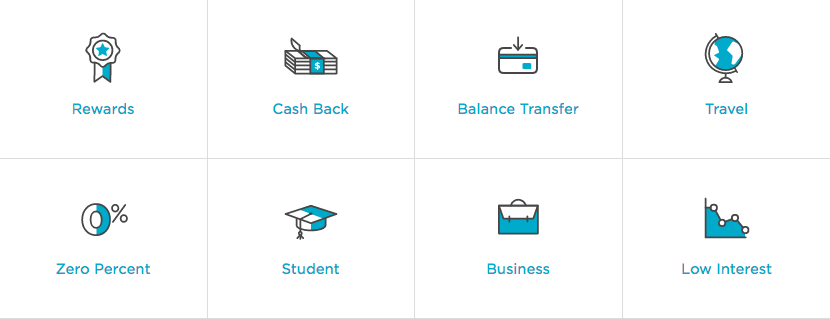Reducing competition by building awesome stuff
What actually happens when someone shops for a new credit card these days?
Let’s assume they aren’t stirred to action in response of a piece of direct mail. I think we can agree that more often than not, those end up in the bin, along with feelings of resentment on behalf of the poor trees cut down to make all that unwanted postage.
Usually, if you want a new credit card, you'll ask one of three parties:
- your bank
- your friends
If you’re set on a getting a credit card from the bank you have a checking account with, you may have a couple options, but likely you’ll end up with the consumer card aimed at the specific FICO range you’re currently in (e.g. if you have a score of 720, you’ll get the product marketed to applicants between 700-760 along with the applicable rates and fees). Not a lot of comparison shopping happening in that scenario, which is fine - believe it or not, some people are genuinely satisfied with their bank. Having a credit card from the same institution feels like the easiest option.
What about people who just want to know what their friends use, and if they like their card? They certainly aren’t alone. A huge percentage of new cardholders come from word of mouth and referrals. Whether their answer is the best option or not for their friend, there’s a powerful feeling of credibility that comes with a recommendation from someone whose opinion you trust.

Referrals are big business in credit cards, and startups in general. It’s how Dropbox became a viral success, Paypal built its business, and dozens of other Silicon Valley giants. If you sign up for a service and find it valuable, there’s a clear alignment created (not having to lie about the service/product being useful), and a better than good chance that offering an additional perk is an effective incentive to spread the word. Personally, I happily tweet out for products I love to get a free month of service.
Okay, so what about that third option? When I’m shopping for anything, I prefer a variety of information sources, multiple data points and reviews to feel confident in making the right choice. That’s where Google usually enters the fray. But no matter what search term you use, if it includes “credit card”, you’re likely to get a top result that links to a piece of content from one of the major affiliates, like Credit Karma, Nerdwallet, or one of the sites owned by Bankrate. Their whole business is dependent on driving traffic, application conversion, and referral fees, so they’ve built a lot of intelligence into that funnel and are very good at creating high-ranking content.
After entering your search phrase and a little scanning, you’re at one of those sites, comparing multiple products based on a set of criteria you may (or may not) already have in mind. What exactly does that look like? Well, something a lot like this.

On the outset, you’ve got 10 different categories. Clicking into any one of them will provide you with an overwhelming list of dozens, sometimes hundreds of different options to choose from. The competition is fierce. However, those 10 categories are somewhat illusory.
The reality is, these cards are all really broken down by just 2 distinct variables: rewards and purchase rate (APR). They are what industry grey hairs call the “1st tier decision variables”. It’s a fancy way of saying they are the only two things people really weigh heavily when deciding on which card(s) to apply for.
Why? It’s not because those are the only two things that individuals could care about. Comparisons are categorized this way because the issuing organizations are pretty limited in what they can build, so it’s top-down in that sense. The technological infrastructure behind almost every issuing company is about 25 years old and only allows for certain dials to be easily turned - namely, a number value. That makes rewards programs and APR low hanging fruit to adjust and remarket as a new product.
For us, this begged the question: What would you build if you had no third-party limitations? If you weren’t handcuffed to legacy infrastructure, either in-house or with your processing partner. I think you’d seek to differentiate on more than just APR and rewards points. And that’s exactly what we’re doing.
We have a hypothesis
There’s potential for more than just the two 1st tier decision variables of APR and rewards. If we build digital functionality that people want, whether it’s a product that enhances security, accessibility, or anonymity, we can promote bottom-up decision variables. We can leverage user-voice to understand what various groups want in a product, and really take advantage of our agility to build vastly different products that fit different needs.
That ability to create a new category, to really differentiate, means we can also be the leader in that category. And that’s our goal - to create a new category, one defined not by the easiest levers to pull, but by the limiting bounds of aging industry technology that do not apply to us - and to be the undisputed leader in that category.